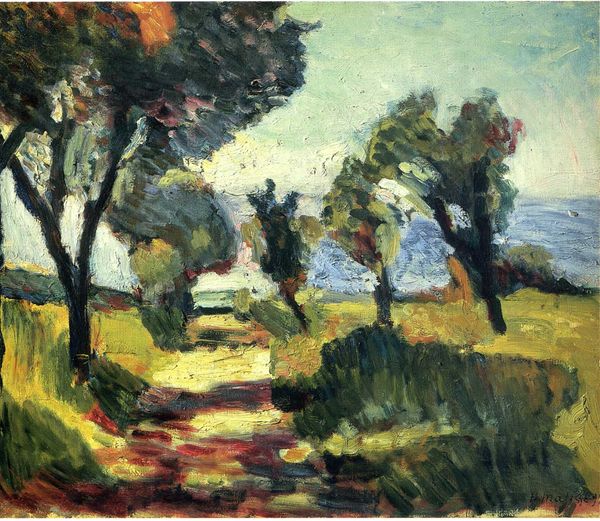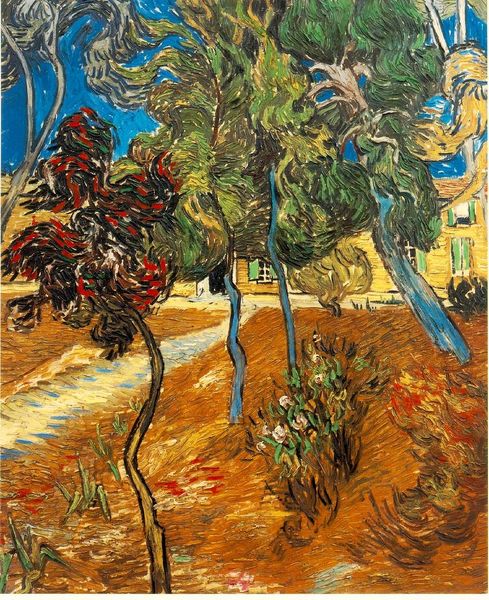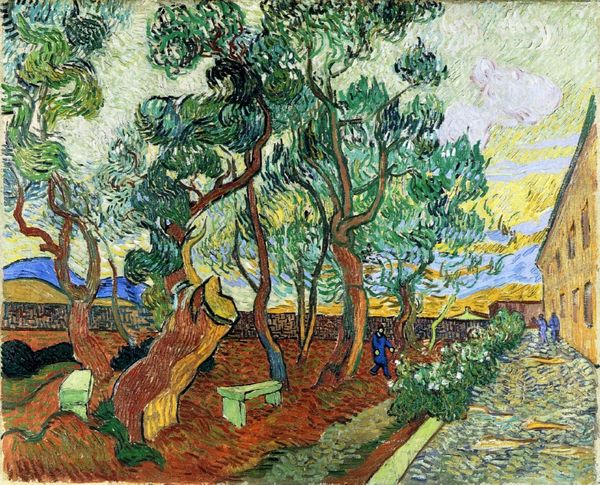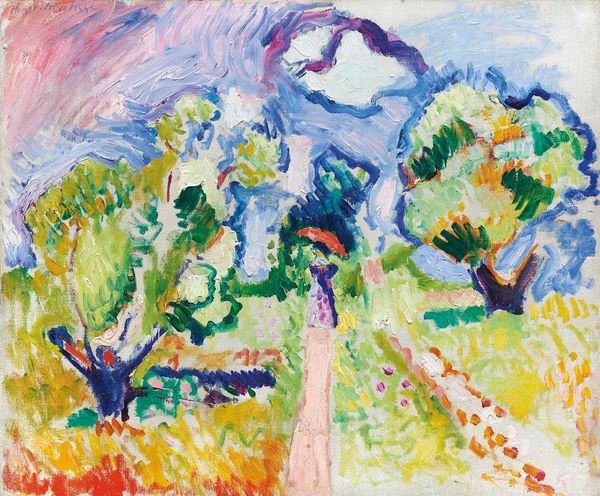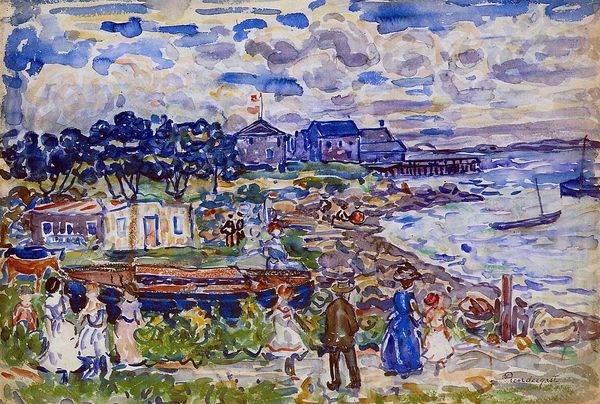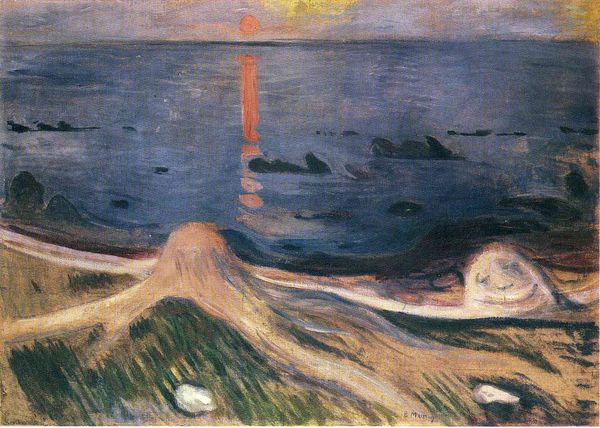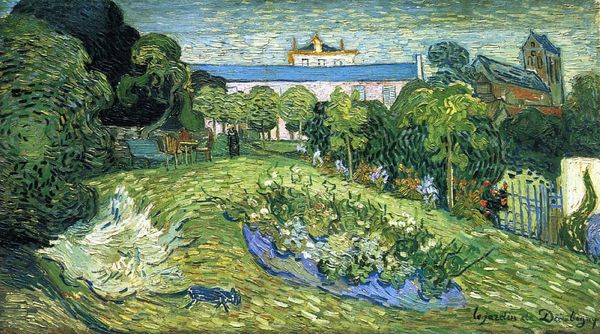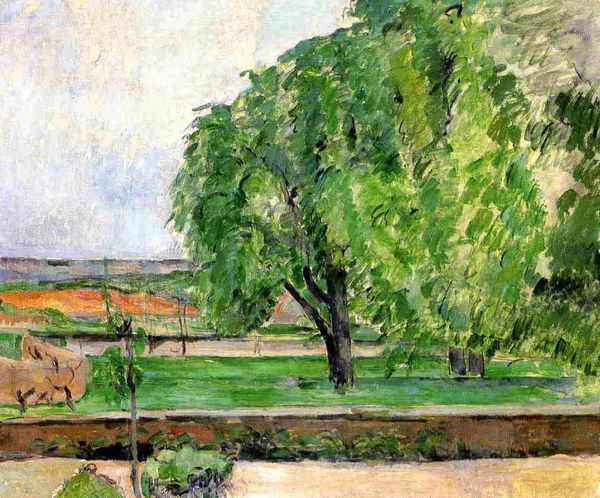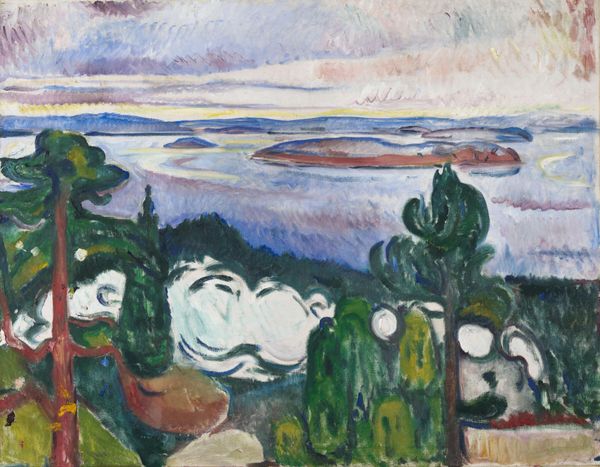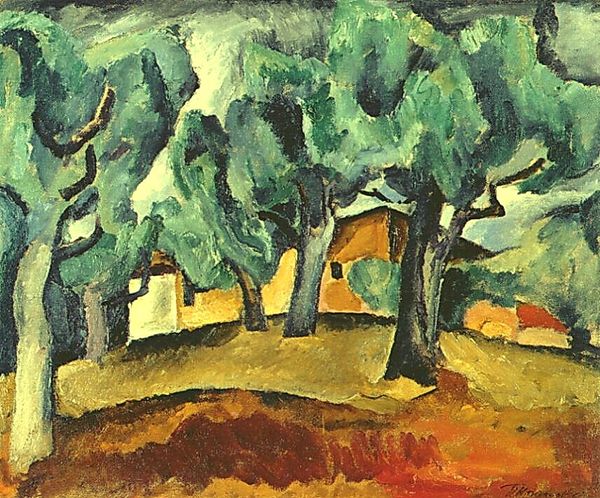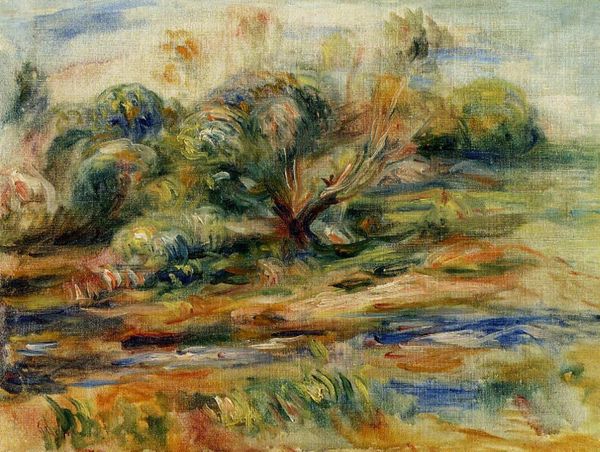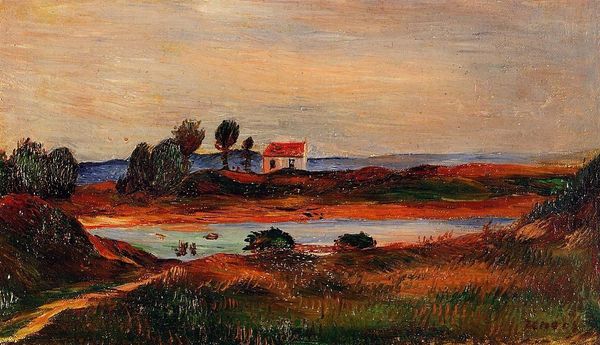
painting, oil-paint
#
tree
#
painting
#
oil-paint
#
landscape
#
oil painting
#
forest
#
expressionism
#
water
#
modernism
#
expressionist
Dimensions: 93 x 167 cm
Copyright: Public domain
Editor: Here we have Edvard Munch's "Trees on the Shore," painted in 1904 using oil paints. The grouping of trees really dominate the foreground, creating this almost theatrical framing of the sea and distant figures. It feels so emotionally charged, even in its seeming simplicity. How do you interpret this work? Curator: It's intriguing how Munch uses these arboreal sentinels. Trees are a common symbol of growth, life, and connection to the earth. Notice how they're not individualized, but massed together, almost forming a barrier or a gate. What might they be guarding, or perhaps concealing? Editor: Perhaps the secrets of the figures on the pier in the distance? They seem so isolated, almost spectral. Curator: Precisely. And the water, what does that traditionally signify? Editor: Change, the unconscious…mystery? Curator: Exactly! Munch masterfully juxtaposes these symbols. The static, rooted trees against the fluid, ever-changing sea. This tension speaks to the inner turmoil so prevalent in Munch's work – a struggle between stability and the allure of the unknown, the conscious and unconscious. Editor: So the painting isn't just a landscape, but a symbolic representation of internal conflict? Curator: Absolutely. Munch's expressionist style allows him to imbue the natural world with his emotional landscape. The slightly distorted forms, the intense colours... all contributing to this feeling. The figures in the distance seem alienated not only from each other, but perhaps also from their own identities, echoing the anxiety of modern life. What did you make of them? Editor: I didn't really pick up on the tension between stasis and movement. I just assumed the trees and pier formed two different zones, both inviting to look at, but perhaps in contradictory ways. Curator: Which might also work, of course. But that's the magic, isn't it? How it stays suggestive and elusive in equal measure.
Comments
No comments
Be the first to comment and join the conversation on the ultimate creative platform.

